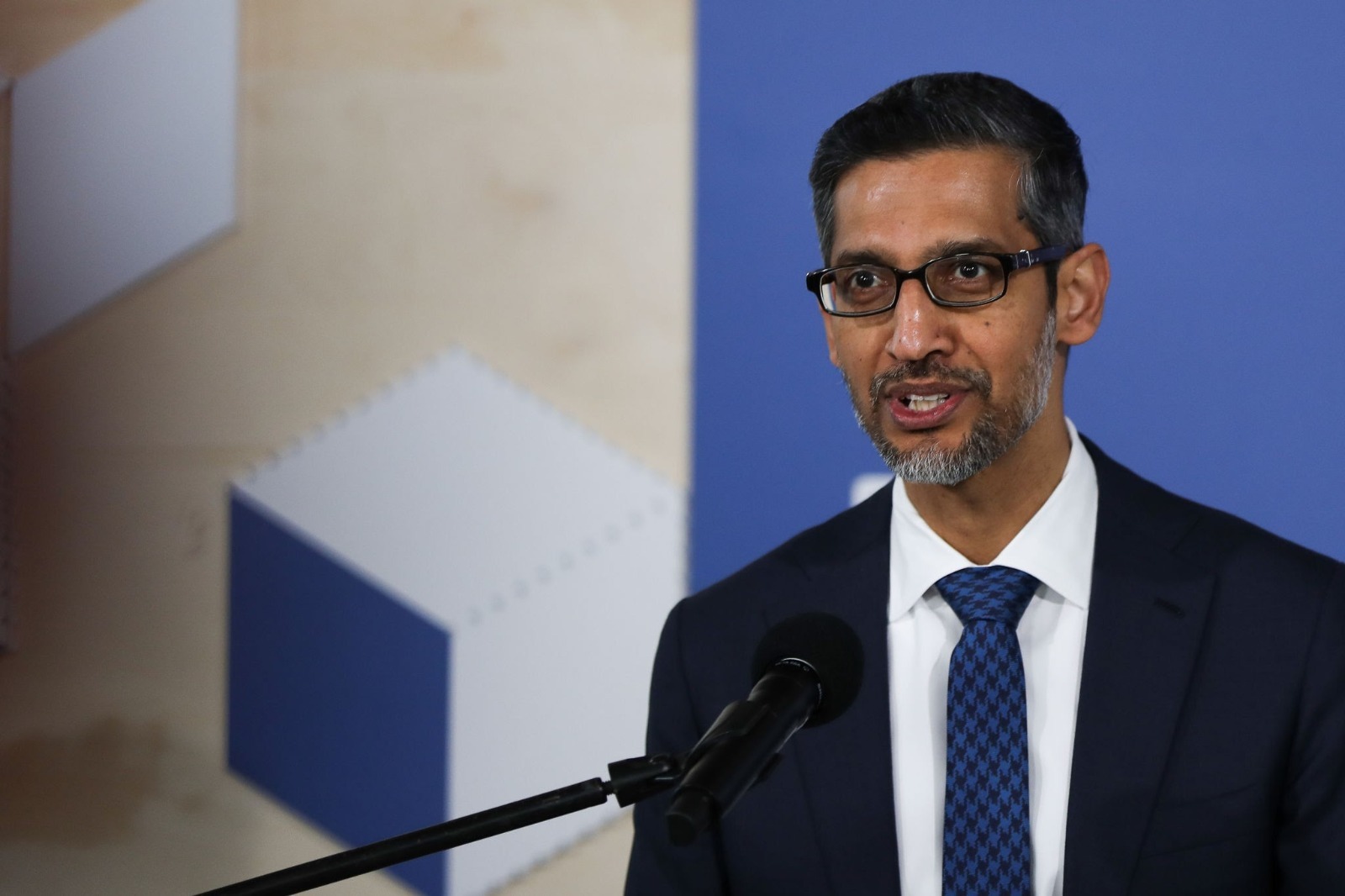Table of Contents
ToggleIntroduction: Understanding the Role of the Chief Executive Officer of Google
- In the tech world, few titles carry as much weight and influence as the Chief Executive Officer (CEO) of Google. Google, now part of the parent company Alphabet Inc., has been at the forefront of technology and innovation for decades. The CEO of Google plays a pivotal role in shaping the future of not just the company, but also the wider tech landscape. As one of the largest and most valuable companies in the world, Google has impacted billions of lives, making its CEO one of the most powerful figures in the business world.
- In this article, we will explore the role of the CEO of Google, the history of leadership within the company, and how the current and past CEOs have contributed to Google’s growth and success. Additionally, we will examine the leadership style, challenges faced, and the innovative direction Google has taken under the guidance of its CEOs.
The Evolution of Google’s Leadership: From Founders to CEO
- Google was founded in 1998 by Larry Page and Sergey Brin while they were students at Stanford University. Initially, the company operated as a search engine, but it quickly expanded into various other areas, including advertising, cloud computing, and hardware. While Page and Brin held leadership positions in the early days, they eventually appointed professional CEOs to manage the operations of the company.
Larry Page and Sergey Brin: The Founders Who Shaped Google’s Vision
- Larry Page and Sergey Brin laid the foundation for Google’s massive success. As co-founders, they were deeply involved in the company’s strategic decisions. Their leadership during the early years was marked by a focus on innovation and a commitment to building a company that provided valuable services to users worldwide. While Page served as the CEO from 1998 until 2001, he remained involved with the company in various capacities after stepping down.
Eric Schmidt: Google’s First Professional CEO (2001-2011)
- In 2001, Eric Schmidt was appointed CEO of Google. Schmidt’s experience in the tech industry, including his time at Novell and Sun Microsystems, was seen as essential for guiding Google through its rapid expansion. Under Schmidt’s leadership, Google diversified its portfolio, acquiring companies like YouTube and Android. Schmidt helped establish Google as not only a search engine but also as a leader in digital advertising, mobile platforms, and cloud computing. Schmidt remained CEO until 2011, when he transitioned to the role of Executive Chairman, handing over the CEO position to Larry Page once again.
Larry Page’s Second Tenure as CEO (2011-2015)
- After Schmidt’s tenure, Larry Page returned as CEO in 2011. Page’s second stint as CEO focused on simplifying Google’s business operations and pushing the company towards a more innovative and forward-thinking future. During this time, Page oversaw the restructuring of Google into Alphabet Inc., a parent company that would allow Google to focus on its core internet-based services, while other ventures like self-driving cars, healthcare, and life sciences would operate under different subsidiaries.
Sundar Pichai: The Current CEO of Google (2015-Present)
- In 2015, Sundar Pichai took over as CEO of Google, marking a new era in the company’s leadership. Pichai’s appointment as the head of Google signified a shift towards a more global and inclusive approach to leadership, with Pichai being one of the first Indian-origin executives to lead a major global tech company. Under his leadership, Google has focused on AI, cloud computing, hardware, and expanding its reach into new markets.
The Role and Responsibilities of the CEO of Google
- The CEO of Google is responsible for guiding the overall direction of the company. This includes overseeing daily operations, setting long-term strategic goals, managing key corporate functions, and making high-level decisions that impact the company’s future. Given Google’s vast and ever-growing influence in the tech industry, the CEO must be adept at managing not only business operations but also navigating the ethical and regulatory challenges that come with leading a global tech giant.
Some of the key responsibilities of the CEO of Google include:
- Setting Strategic Direction: The CEO is responsible for ensuring that Google stays ahead of technological trends and continues to innovate.
- Leading Innovation: With Google’s heavy reliance on AI, machine learning, and cloud technologies, the CEO must ensure the company stays at the cutting edge of these innovations.
- Navigating Legal and Regulatory Issues: Google is often under scrutiny from governments and regulators worldwide. The CEO must lead the company through these challenges while maintaining its reputation.
- Driving Growth and Expansion: The CEO is tasked with expanding Google’s reach into new markets and ensuring sustained revenue growth.
Sundar Pichai: The Visionary Leader Behind Google’s Growth
- Sundar Pichai’s appointment as CEO in 2015 was a defining moment for Google. Since taking over, Pichai has led the company through a period of exponential growth and transformation. Here are some key accomplishments under Pichai’s leadership:
Focus on Artificial Intelligence and Machine Learning
- One of the most significant areas of focus during Pichai’s leadership has been artificial intelligence (AI) and machine learning (ML). Google has invested heavily in AI technology, and under Pichai’s guidance, the company has expanded its efforts in natural language processing, computer vision, and other AI-powered services. Google’s AI technology powers everything from Google Search and Google Assistant to its self-driving car project, Waymo.
Expansion of Cloud Computing
- Google Cloud has become a central part of the company’s overall strategy under Pichai. While Google Cloud was initially a latecomer to the cloud computing market, it has grown rapidly in recent years, competing with giants like Amazon AWS and Microsoft Azure. Pichai’s focus on growing Google’s cloud business has paid off, with the company consistently expanding its customer base and building new partnerships.
Advancing Hardware and Consumer Products
- Pichai has also overseen the growth of Google’s hardware division, with products such as Pixel smartphones, Google Home smart speakers, and Nest home automation products gaining significant traction in the consumer market. Pichai’s leadership has fostered a more integrated approach to Google’s ecosystem, ensuring that its hardware, software, and services work seamlessly together.
Ethical and Privacy Challenges
- As one of the world’s largest tech companies, Google has faced increasing scrutiny around issues like privacy, data security, and monopolistic practices. Pichai has taken a more transparent and responsible approach to address these concerns, advocating for stronger privacy protections for users while also navigating the complex regulatory landscape in different countries.
The Leadership Style of the CEO of Google
- The leadership style of the CEO of Google is crucial to the company’s culture and success. Sundar Pichai, in particular, is known for his calm, empathetic, and collaborative leadership approach. He values diversity and inclusion, ensuring that Google’s workforce reflects a broad spectrum of perspectives and backgrounds. This leadership style has allowed Google to maintain a high level of creativity and innovation within its teams.
- Pichai’s leadership style contrasts with that of previous CEOs. For example, Eric Schmidt was more hands-on and focused on aggressive growth, while Larry Page emphasized a visionary, future-oriented approach. Pichai’s leadership blends these traits by focusing on both innovation and collaboration, ensuring that Google remains a market leader.
Challenges Faced by the CEO of Google
Being the CEO of Google is not without its challenges. Some of the key challenges that the current CEO, Sundar Pichai, faces include:
- Regulatory Scrutiny: Google faces increasing pressure from governments and regulatory bodies around the world. Issues like data privacy, monopolistic practices, and competition laws continue to be a significant challenge for the company.
- Competition in the Tech Industry: Google competes in multiple sectors, from search engines to cloud computing to hardware, against other tech giants such as Apple, Amazon, and Microsoft. Staying ahead of the competition requires constant innovation and strategic planning.
- Public Perception and Trust: Google is often criticized for its handling of user data, its market dominance, and its role in shaping public discourse. Ensuring public trust and addressing these concerns is a major responsibility of the CEO.
The Future of Google: What’s Next?
- The future of Google under the leadership of Sundar Pichai looks promising. The company is poised to continue leading in areas like artificial intelligence, quantum computing, cloud services, and consumer technology. As Google expands its global reach and navigates the challenges of a rapidly changing digital landscape, the role of the CEO will continue to be crucial in driving the company’s future success.
Conclusion
- The Chief Executive Officer of Google is a position of immense responsibility and influence. From Larry Page and Eric Schmidt to Sundar Pichai, each leader has brought their unique vision to the table, contributing to Google’s growth and success. Pichai’s leadership has focused on technological innovation, global expansion, and addressing ethical concerns, ensuring that Google remains at the forefront of the tech industry.
- As Google moves into the future, the role of the CEO will be pivotal in navigating the challenges and opportunities that lie ahead. Whether it’s through AI advancements, regulatory challenges, or staying competitive in an ever-evolving industry, the CEO of Google will continue to shape the tech world for years to come.






